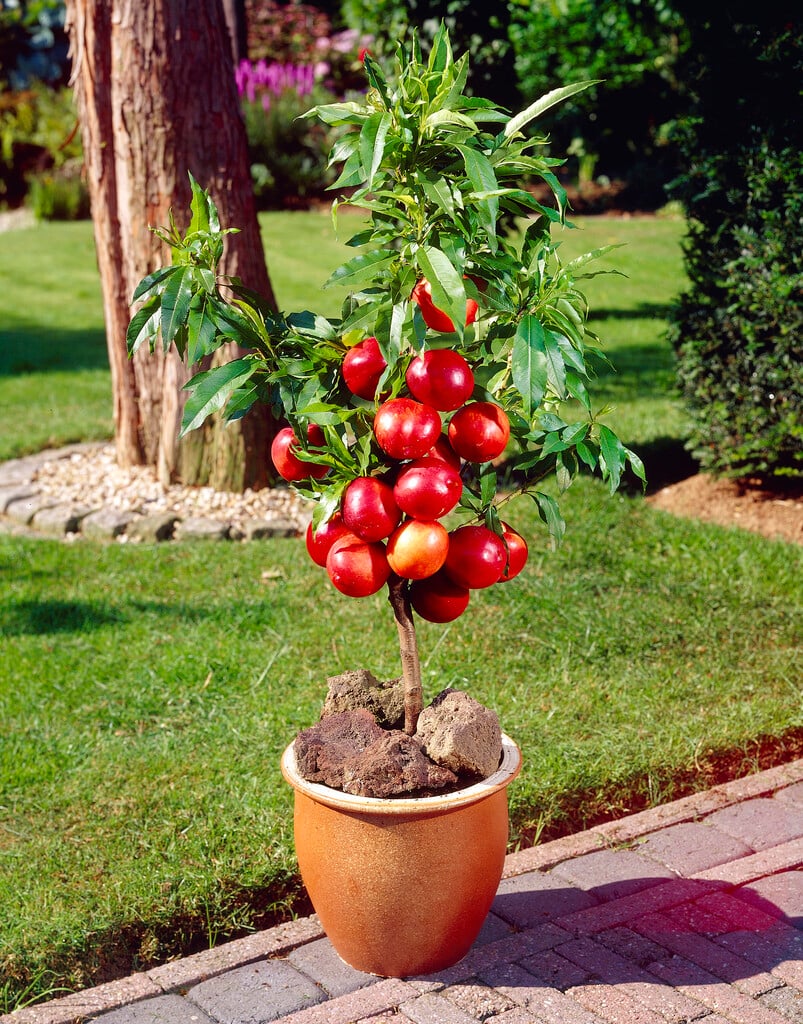Prunus persica var. nectarina (F)
nectarine
Nectarines produce attractive pink blossom in spring that is followed by yellow-red, smooth skinned fruit in mid-summer. Many cultivated nectarines have been derived from this variety.
Size
Ultimate height
4–8 metresTime to ultimate height
5–10 yearsUltimate spread
2.5–4 metresGrowing conditions
Moisture
Moist but well–drainedpH
Acid, Alkaline, NeutralColour & scent
| Stem | Flower | Foliage | Fruit | |
| Spring | Pink | Green | ||
|---|---|---|---|---|
| Summer | Green | Red Yellow | ||
| Autumn | ||||
| Winter |
Position
- Full sun
Aspect
South–facing or West–facing
Exposure
Sheltered Hardiness
H4Botanical details
- Family
- Rosaceae
- Native to GB / Ireland
- No
- Foliage
- Deciduous
- Habit
- Bushy
- Genus
Prunus can be deciduous or evergreen trees or shrubs with showy flowers in spring, and often good autumn foliage colour. Some have edible fruit in autumn, and a few species have ornamental bark
- Name status
Unresolved
How to grow
Cultivation
Grow in a moist, but well-drained soil in full sun. Protect flowers from frosts with biodegradable horticultural fleece. Best grown fan-trained, although in the south of England can be grown free-standing bush. See How to grow: Nectarines
Propagation
Propagate by seed sown in containers outdoors in autumn; or by softwood cuttings, with bottom heat, in early summer. Nectarine cultivars are propagated by grafting
Suggested planting locations and garden types
- Cottage and informal garden
- Wildlife gardens
- Edible fruit
- Wall side borders
Pruning
In milder areas, and in warm sheltered situations may be grown as a free-standing tree, but generally best grown as a fan. Prune after harvest, see Fan trained trees and Pruning established fans. Trees grown for ornamental purposes need little pruning: Pruning group 1.
Pests
May be susceptible to glasshouse red spider mite, aphids, and scale may be problematic, especially on wall-trained specimens or those grown in a glasshouse. Squirrels and birds may damage fruit
Diseases
May be susceptible to peach leaf curl, bacterial canker, silver leaf, brown rot and replant diseases may cause problems. Late frosts can damage the blossom
Love gardening
Sign up to receive regular gardening tips, inspiration, offers and more
View our Privacy Policy
Get involved
The Royal Horticultural Society is the UK’s leading gardening charity. We aim to enrich everyone’s life through plants, and make the UK a greener and more beautiful place.

